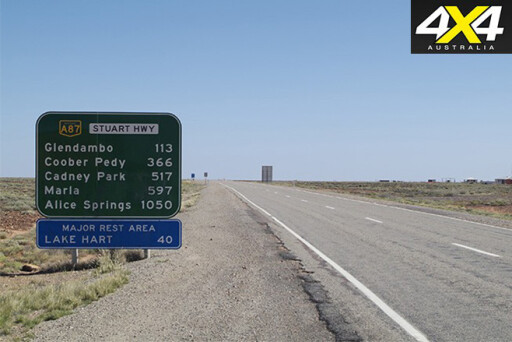.jpg )
Our latest trip saw us heading south on the Stuart Highway at around the time the annual migration of grey nomads was heading north, and there was a steady stream of caravans and tow vehicles heading for the sun of northern and central Australia.
Many of the caravans were being towed by the latest dual-cab utes on the market, and many of the ’vans were bloody monsters, easily weighing 2.5 tonnes. And that’s before they were loaded with water and all the paraphernalia that some travellers can’t seem to do without.
There are currently six one-tonne utes on the market that can supposedly tow 3500kg – if you believe the figures spouted by the car manufacturers. These are the Mazda BT-50, Ford Ranger, Isuzu D-Max, Holden Colorado, Nissan Navara and the latest Toyota Hilux. The Mitsubishi Triton is rated at 3100kg, while the VW Amarok comes in at a still-healthy and maybe only slightly exaggerated 3000kg. Whatever the numbers, it’s all a bit of marketing hype, I reckon.
In the smallprint of a manufacturer’s handbook you’ll find less publicised figures of GVM (gross vehicle mass), which is the maximum allowable weight of the vehicle fully loaded, and GCM (gross combined mass), which is the combined total weight of the vehicle and any trailer it is towing.
For example, the Ford Ranger dualcab weighs 2200kg with an impressive 1000kg payload capacity. Even that figure is overrated, because without doing something to the suspension you’ll be dragging the bum if you have the vehicle at its maximum GVM of 3200kg – yet plenty of people do.
 The rated tow figure of the Ranger is 3500kg, while the GCM is 6000kg – much the same as many of the dual-cabs. This means the maximum car weight has now dropped to 2500kg – a payload decrease of 700kg. That means the maximum weight you can carry in a Ford towing a 3500kg caravan is just 300kg. That’s not much more than two healthy adults, a pet dog and a full tank of fuel.
The rated tow figure of the Ranger is 3500kg, while the GCM is 6000kg – much the same as many of the dual-cabs. This means the maximum car weight has now dropped to 2500kg – a payload decrease of 700kg. That means the maximum weight you can carry in a Ford towing a 3500kg caravan is just 300kg. That’s not much more than two healthy adults, a pet dog and a full tank of fuel.
The other common dual-cab utes are much the same, some even worse. So you can bet your bottom dollar that there are very few rigs towing a heavy ’van that would be legal, given those figures. But while legality may be an issue, it’s the safety concerns that are paramount.
I can’t believe a tow vehicle weighing an average of two tonnes can provide a stable platform for a trailer that weighs 50 per cent more than it. In my eyes it just defies physics.
Such a weight discrepancy means you can easily get into a situation where the tail wags the dog, upsetting the balance of the ute and badly influencing steering and braking. Some of the ’vans we saw on the Stuart were also loaded badly, meaning the tow vehicle was down at the bum with the front pointing skywards.
Then there’s the towing performance of these small diesel engines. They may be fine on flat stretches, but give them a hill to climb and they lose any leeway to pass or even stay anywhere near the speed limit – and fuel usage under such conditions is chronic.
Dual-cab utes are popular because they can be so many things to so many different people. However, towing big heavy ’vans that weigh more than 2500kg when loaded is not one of them.
Stick to a camper trailer or a small caravan weighing less than 2000kg!
If you need to tow one of the bigger ’vans, get a 200 Series LandCruiser at the bare minimum. Better still, get it behind a Ram or a Ford F-250. You’ll not only appreciate the effortlessness of such a tow vehicle, it’ll be legal and you and every other road user will be a lot safer for it.

COMMENTS